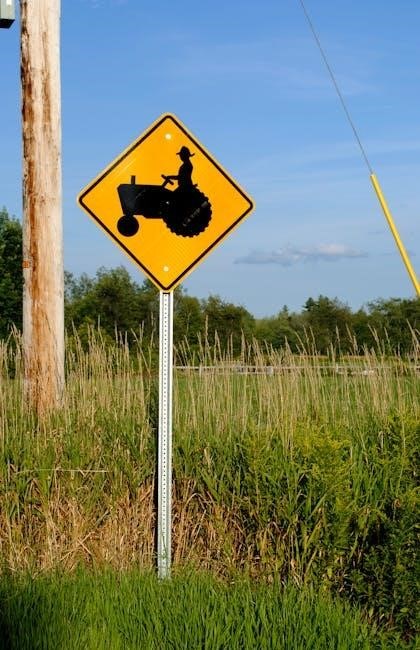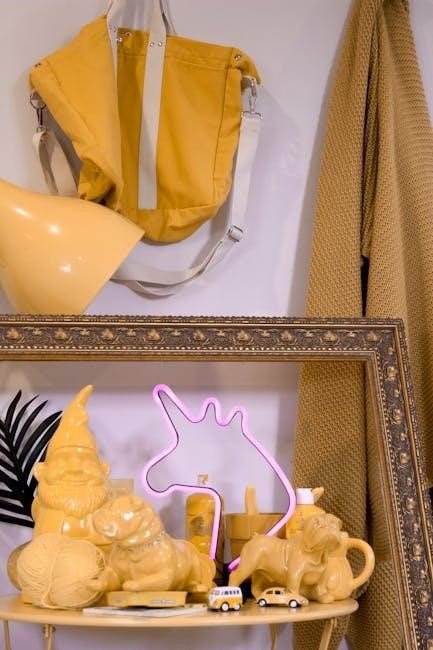
guide to yellow stripey things
Yellow stripey things are a fascinating variety of creatures and objects‚ from buzzing insects like bees and wasps to striped clothing and animals. This guide explores their differences‚ roles‚ and how to identify them‚ making it both educational and entertaining.

Insects
Insects with yellow stripes are diverse‚ including bumblebees‚ honeybees‚ yellow jackets‚ carpenter bees‚ hoverflies‚ paper wasps‚ and mud daubers. They play key roles as pollinators or predators‚ but some can be beneficial or bothersome depending on the species and situation.
Bumblebees
Bumblebees are among the most recognizable yellow stripey insects‚ known for their fuzzy bodies and distinctive black and yellow stripes. These bees are essential pollinators‚ contributing significantly to the health of ecosystems and agriculture. Bumblebees are social creatures‚ living in colonies with a queen and worker bees‚ but their nests are much smaller than those of honeybees. They are generally non-aggressive and only sting when threatened. Unlike honeybees‚ bumblebees can sting multiple times‚ but they prefer to avoid confrontations. These bees are often mistaken for carpenter bees‚ but bumblebees have a more robust‚ hairy appearance. They are also important indicators of environmental health‚ as changes in their populations can signal broader ecological issues. To coexist peacefully with bumblebees‚ avoid disturbing their nests and plant bee-friendly flowers to support their habitat. Their bright stripes serve as a warning to predators‚ making them a striking and valuable part of the natural world.

Honeybees

Honeybees are iconic yellow stripey insects‚ renowned for their critical role in pollination and honey production. These bees are highly social‚ living in structured colonies with a queen‚ worker bees‚ and drones. Unlike bumblebees‚ honeybees are smaller and have a sleeker‚ less hairy appearance. Their distinctive yellow and black stripes serve as a warning to predators‚ signaling their ability to sting. Honeybees are generally non-aggressive but will defend their hives when threatened. They are indispensable to agriculture‚ pollinating a wide variety of crops‚ from fruits to nuts. Their hives are meticulously organized‚ with workers gathering nectar and converting it into honey through regurgitation and evaporation. Honeybees are also unique in their communication methods‚ using complex dances to locate food sources. Despite their importance‚ honeybees face threats like habitat loss and pesticides‚ making conservation efforts essential. To peacefully coexist with honeybees‚ plant bee-friendly flowers and avoid using harmful chemicals in gardens. Their role in ecosystems and food production makes them one of the most valuable yellow stripey creatures in the natural world.
Yellow Jackets

Yellow jackets are brightly striped‚ flying insects known for their vibrant yellow and black coloration. They belong to the Vespula genus and are often mistaken for bees due to their similar appearance. However‚ yellow jackets are actually wasps‚ and their bodies are sleeker and less hairy than those of bees. These insects are highly social‚ living in large colonies with a strict hierarchy. Yellow jackets are both pollinators and predators‚ feeding on insects‚ spiders‚ and sweet substances like soda and fruit. They are also known for their paper-like nests‚ which they construct using chewed wood and saliva. Unlike honeybees‚ yellow jackets are more aggressive‚ especially when their nests are threatened. Stings from yellow jackets can be painful and‚ in some cases‚ cause allergic reactions. To avoid encounters‚ it is recommended to seal food and trash‚ as their attraction to sugar and protein can lead to unwanted interactions. While they play a vital role in controlling pest populations‚ their defensive nature makes them a concern for outdoor activities. Understanding their behavior and habitat can help coexist peacefully with these yellow stripey creatures.

Animals
Zebras

Zebra stripes are iconic‚ featuring yellow and black patterns. Each zebra’s striping is unique‚ aiding in identification. The stripes help zebras blend into their surroundings and regulate body temperature. They also serve as a defense mechanism‚ making it harder for predators to target individual zebras.
Zebras are among the most recognizable animals due to their striking black and yellowish-white stripes. Each zebra’s striping pattern is unique‚ similar to human fingerprints‚ aiding in identification. The stripes serve multiple purposes‚ including camouflage and thermoregulation. They help zebras blend into their surroundings‚ making it difficult for predators to single out individuals. Additionally‚ the stripes absorb or reflect heat‚ aiding in temperature regulation. Despite their bold appearance‚ zebras are agile and can run swiftly to escape danger. Their stripes also play a role in social interactions‚ helping zebras recognize one another. In the wild‚ zebras are found in grasslands and savannas‚ where their striped coats provide natural protection. Interestingly‚ while zebras are often associated with black and white stripes‚ some species have a yellowish tint to their stripes‚ adding to their distinctive appearance. This unique characteristic makes zebras one of the most iconic and fascinating creatures in the animal kingdom‚ with their stripes serving both practical and identifying purposes.
Clothing

Yellow stripey clothing‚ particularly shirts‚ has become a fashion staple. These vibrant garments add a pop of color and style to any outfit‚ offering a casual yet striking appearance. Perfect for various occasions‚ they blend seamlessly with different fashion trends and preferences.
Striped Shirts
Striped shirts are a beloved fashion item‚ and those with yellow stripes are particularly eye-catching. These shirts often feature horizontal or vertical stripes in varying widths‚ combining yellow with neutral tones like white‚ black‚ or navy blue. They are versatile and can be dressed up or down‚ making them suitable for both casual outings and semi-formal events. The contrast between the bright yellow and other colors creates a striking visual effect‚ drawing attention and adding a cheerful vibe to any ensemble. Additionally‚ striped shirts are available in different materials‚ from lightweight cotton for summer to warmer fabrics for cooler seasons‚ ensuring year-round wearability. Many fashion enthusiasts appreciate how striped shirts can easily mix and match with jeans‚ skirts‚ or shorts‚ offering endless styling possibilities. Whether you’re aiming for a classic look or a modern twist‚ yellow striped shirts are a dynamic and stylish choice that never goes out of fashion.

Safety Tips
When interacting with or encountering yellow stripey things‚ safety is paramount. For insects like bees or wasps‚ avoid sudden movements and refrain from disturbing their nests. Sealing cracks around your home can help prevent unwanted visitors. Wear protective clothing‚ such as long sleeves‚ when in areas where stinging insects are common. If stung‚ remain calm and seek medical attention if symptoms worsen; For clothing or objects‚ ensure proper care to avoid damage or allergic reactions. Understanding and respecting these yellow stripey things ensures a harmonious coexistence.
- Avoid disturbing nests or hives to prevent aggressive behavior.
- Seal entry points in your home to deter pests.
- Wear protective gear when handling potentially harmful items.
- Stay calm and seek help if stung or bitten.
- Respect wildlife and their roles in the ecosystem.
By following these tips‚ you can safely enjoy the fascinating world of yellow stripey things.